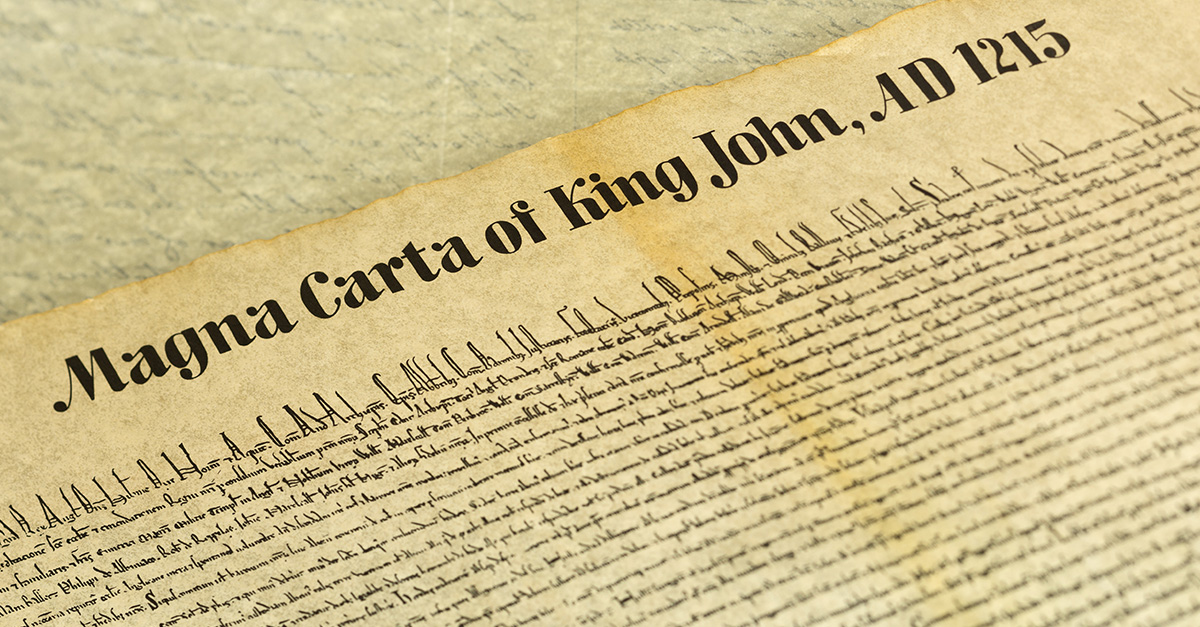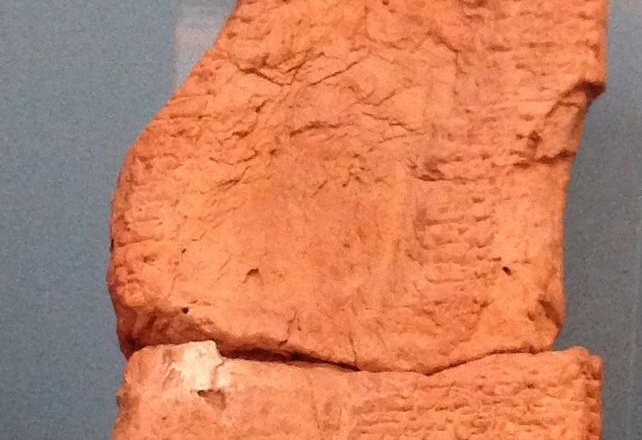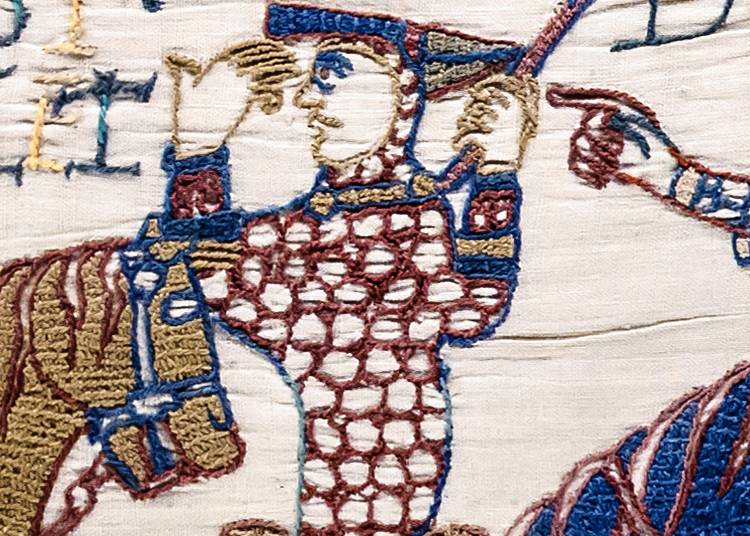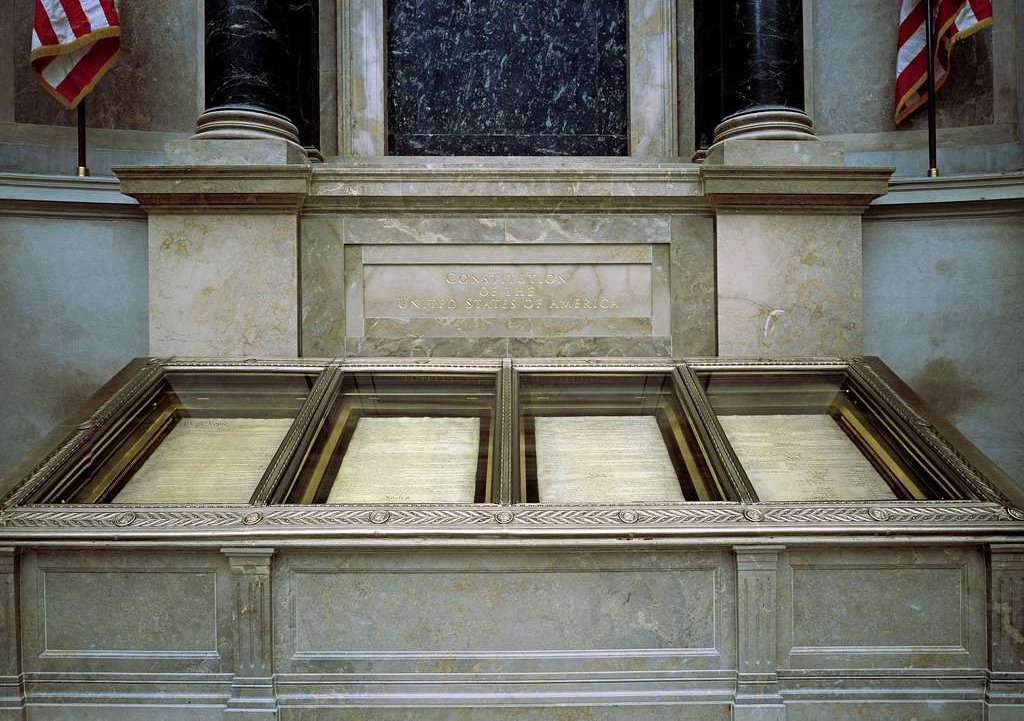How Ancient Legal Documents Made Modern Law We Know Today
We are all familiar with the basic principles of our legal system and how they became enshrined in law over generations. You might even know how laws are passed in the United States. But what about laws before America? How did ancient legal documents written thousands of years ago influence modern law?

Looking Back Through Time
We need to look back in time to understand how we got here. Let's examine some of the greatest legal documents ever written and how they established certain legal principles we still hold today.
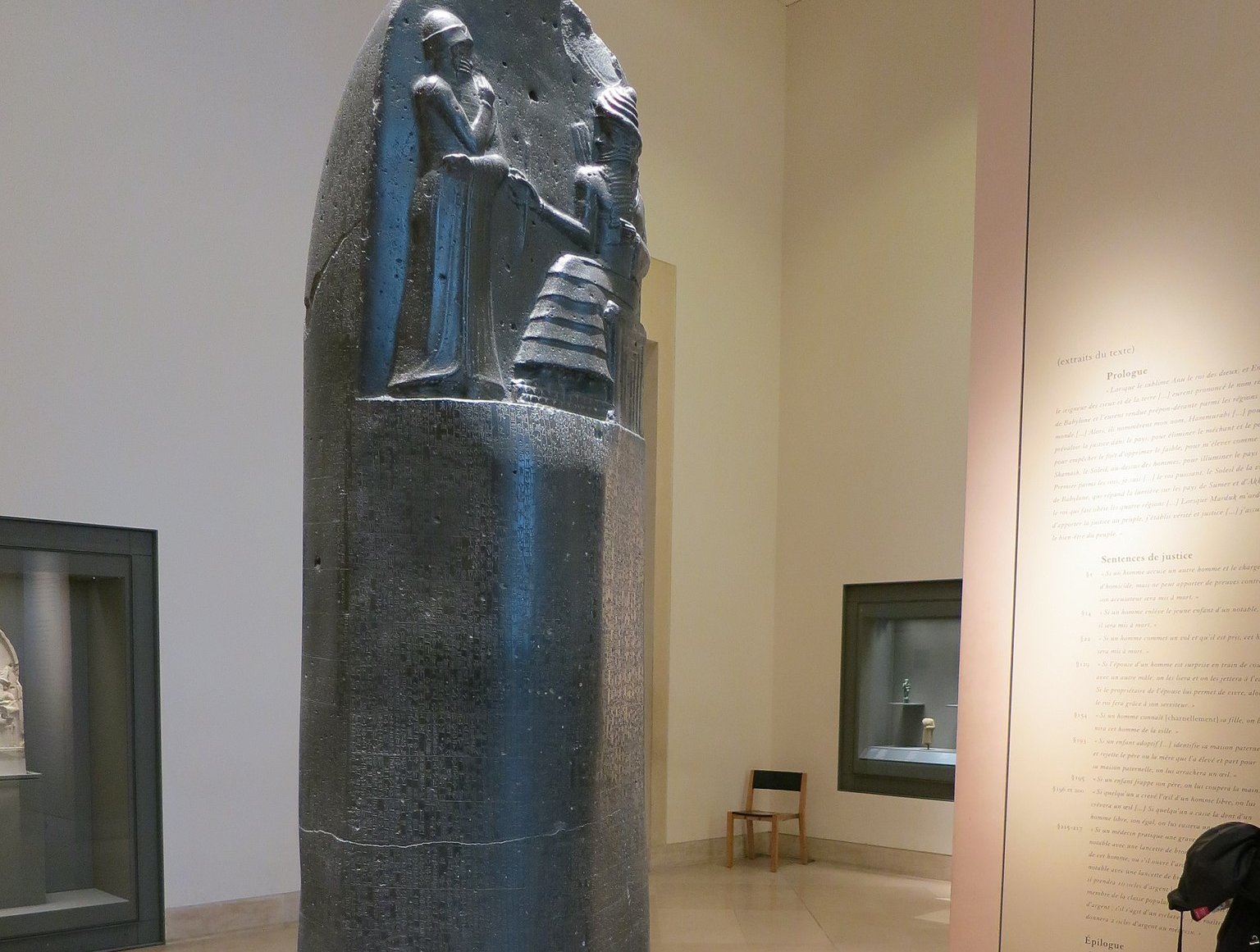 John Sie Yuen Lee, CC BY-SA 2.0, Wikimedia Commons
John Sie Yuen Lee, CC BY-SA 2.0, Wikimedia Commons
Hammurabi's Code
One of the earliest precursors to modern law was the Code of Hammurabi. Written in Ancient Mesopotamia nearly 3,800 years ago by the Babylonian King Hammurabi, the Code was a collection of 282 laws.
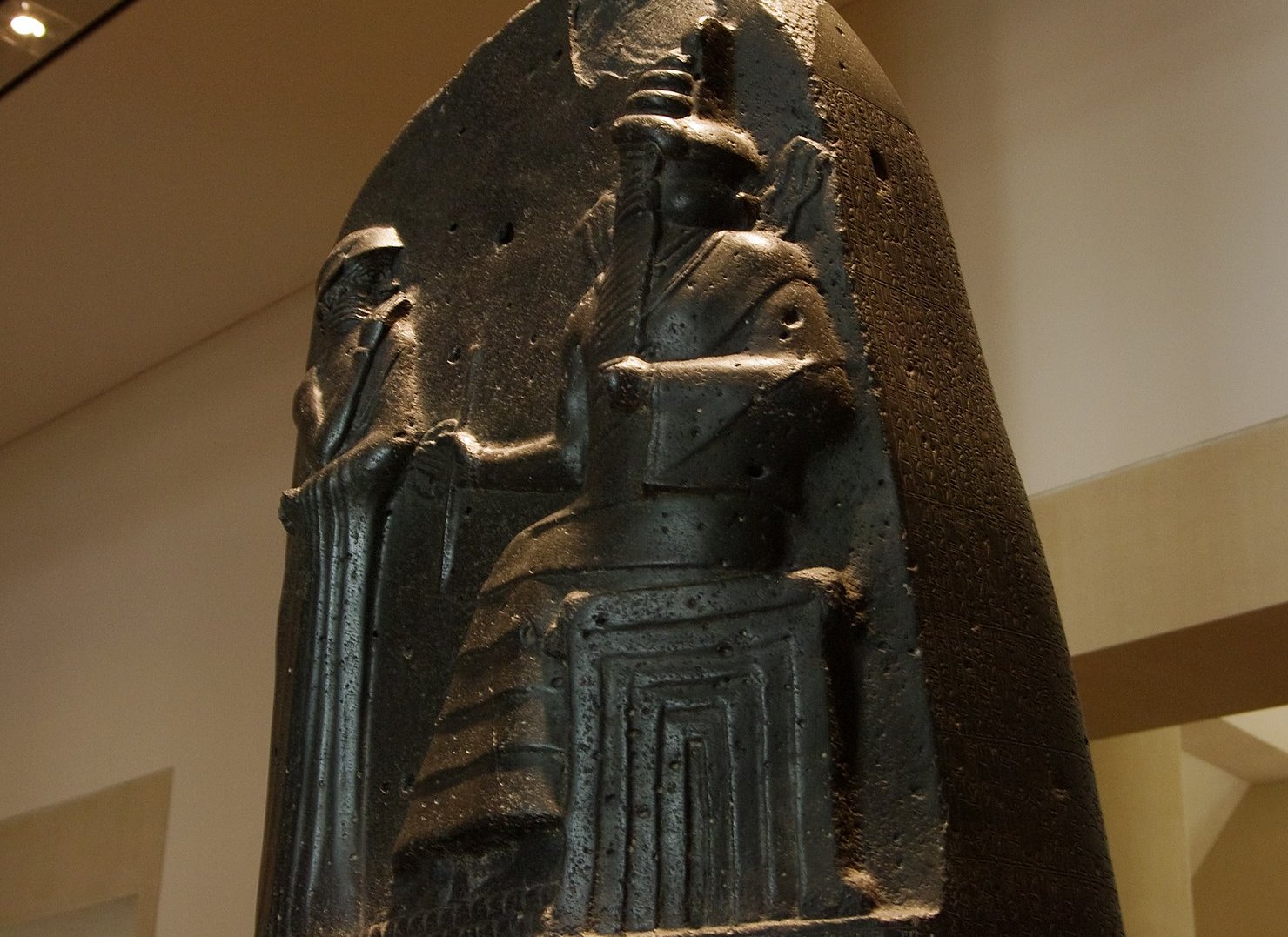 John Brosz, CC BY-SA 2.0, Wikimedia Commons
John Brosz, CC BY-SA 2.0, Wikimedia Commons
Who Was Hammurabi?
Hammurabi was an ancient ruler of Mesopotamia and the first king of the Babylonian civilization. From 1792 to 1750 BC, he conquered many city-states and brought the Assyrians under his rule, uniting Mesopotamia into one kingdom.
 Marie-Lan Nguyen, CC-BY 2.5, Wikimedia Commons
Marie-Lan Nguyen, CC-BY 2.5, Wikimedia Commons
The Code Of Hammurabi
As mentioned, Hammurabi's Code contained 282 laws that Hammurabi stated he "received" from the Babylonian god of justice, Shamash. The Code of Hammurabi covered almost all aspects of Babylonian society, from criminal acts to property disputes, commerce, and familial disputes.
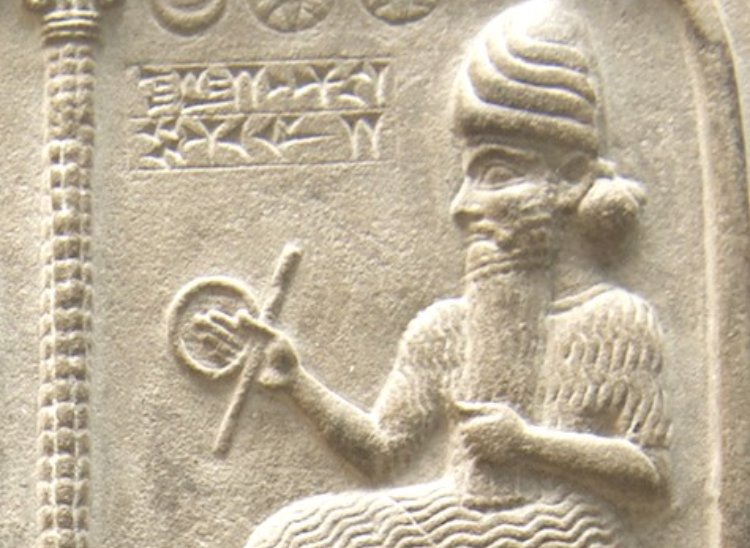 Katolophyromai, Wikimedia Commons
Katolophyromai, Wikimedia Commons
The Slab Itself
The Code of Hammurabi was carved into a seven-foot-tall diorite tablet for public display. The top two feet feature an engraving of Hammurabi, who received the words from the god of justice, Shamash. The bottom five feet are covered in cuneiform script, a series of wedge-shaped characters used in Mesopotamia.
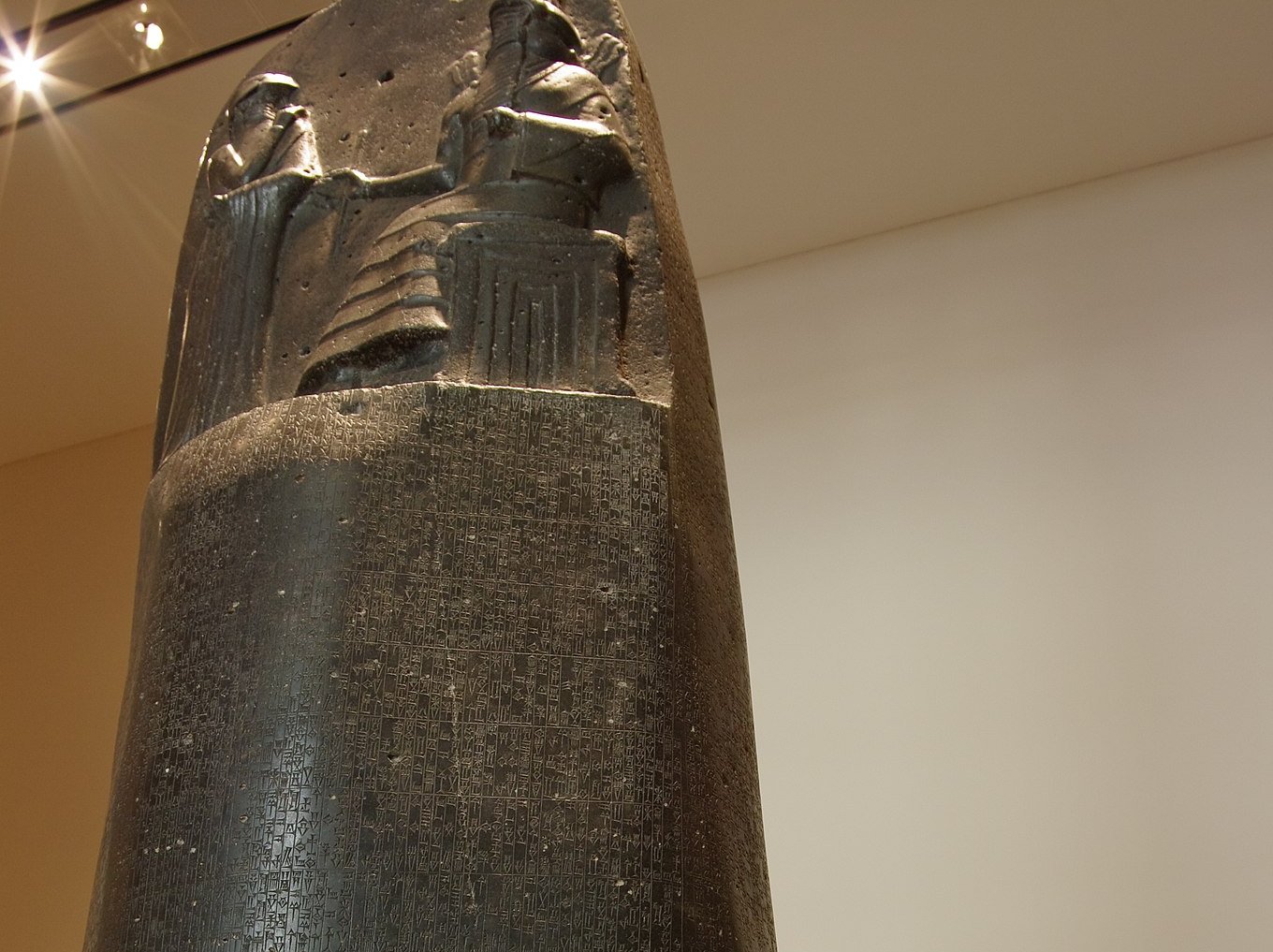 John Brosz, CC BY-SA 2.0, Wikimedia Commons
John Brosz, CC BY-SA 2.0, Wikimedia Commons
Key Points Of Hammurabi's Code
There were a few key points of Hammurabi's Code that you may recognize in today's legal system. While many countries worldwide have abolished such primitive practices, their principles remain.
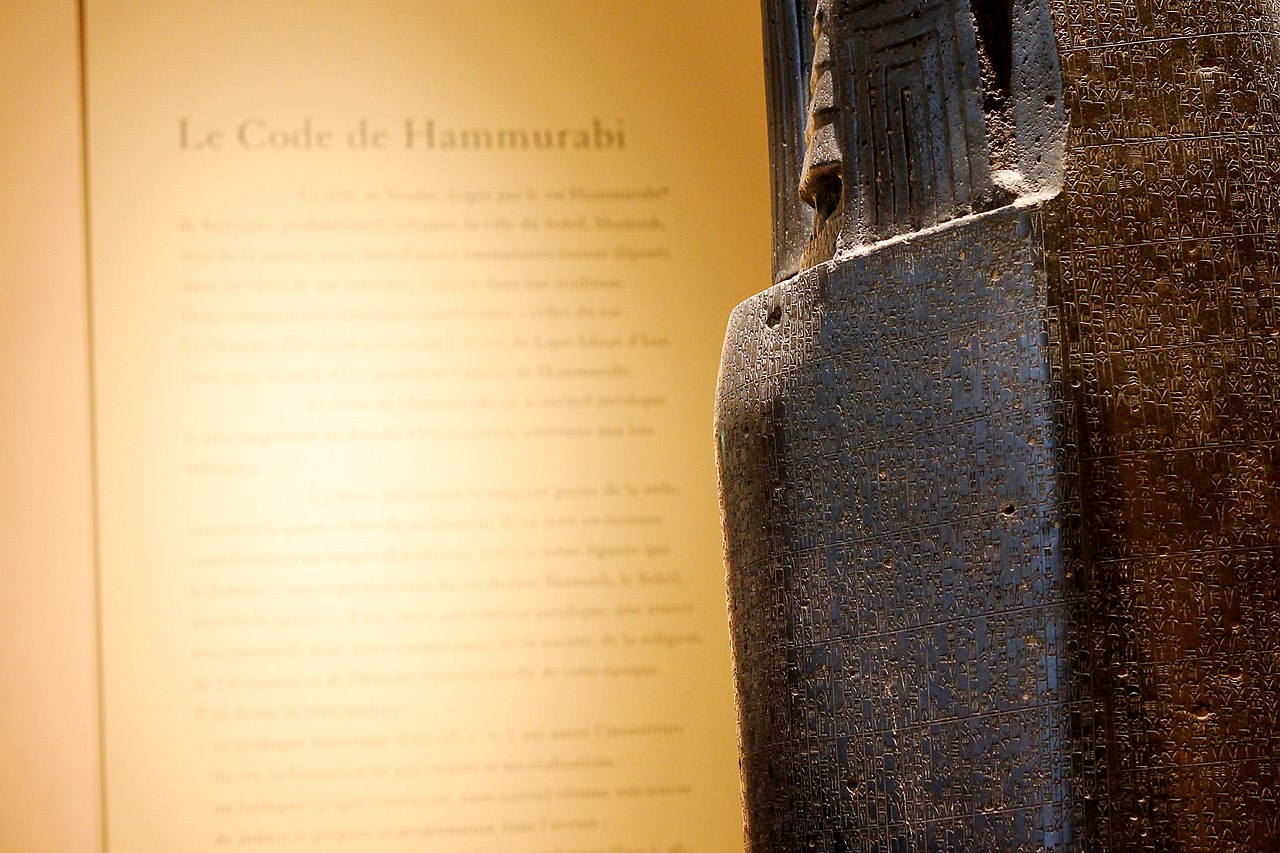 Hammurabi, CC BY 2.0, Wikimedia Commons
Hammurabi, CC BY 2.0, Wikimedia Commons
An Eye For An Eye
It appears that Hammurabi hadn't heard "An eye for an eye makes the whole world blind" just yet, as several of the punishments within the Code dealt with "lex talionis," or the law that what was done to one party would be done to the other. This meant if one person cut off a hand, they would have their hand cut off. Or, an eye gouged out would be punished with the same.
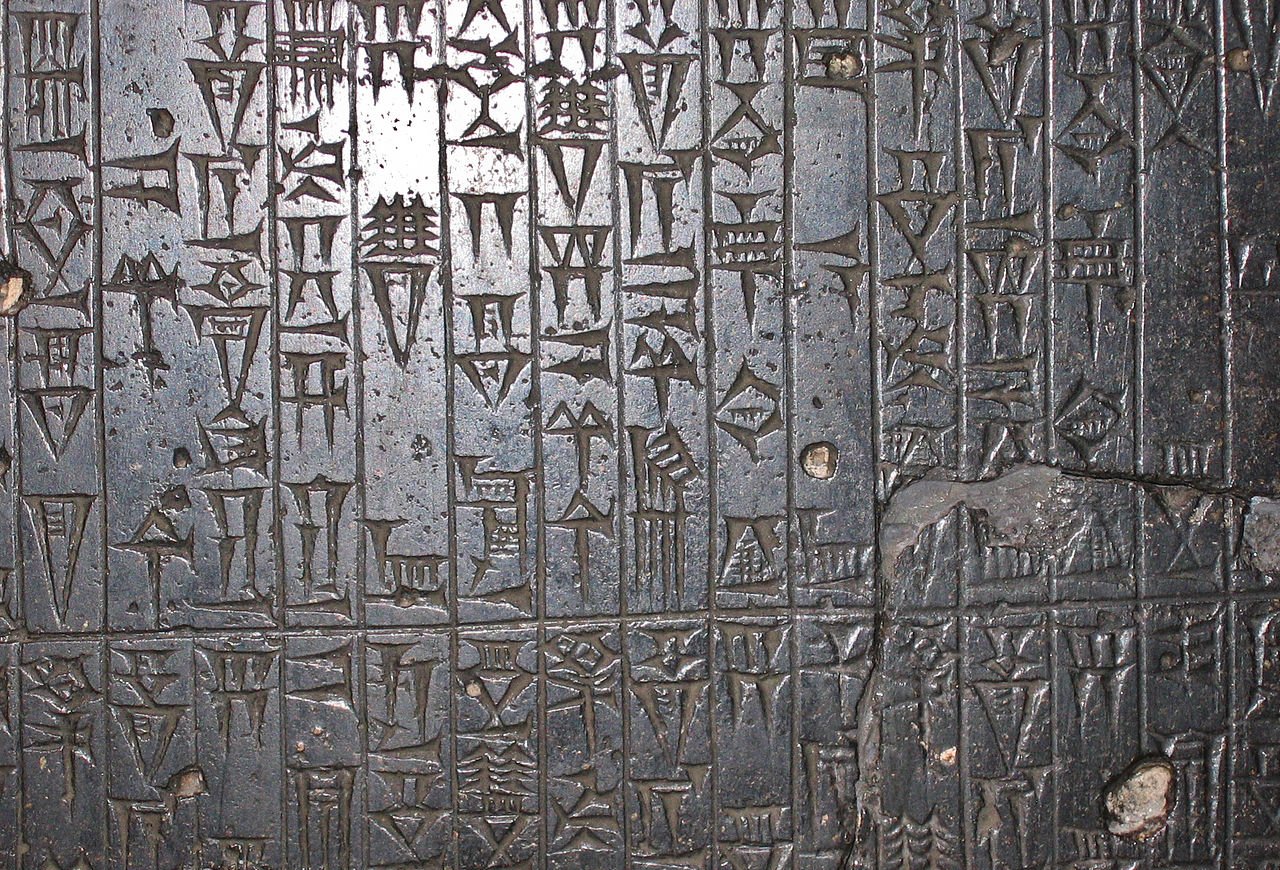 John Ross, CC BY 2.0, Wikimedia Commons
John Ross, CC BY 2.0, Wikimedia Commons
Laborers Working For Pay
Rather than being kept as unpaid enslaved persons during Babylonian times (not to say that there were not slaves, there most definitely were), laborers in Mesopotamia were to receive shekels as payment for their work.
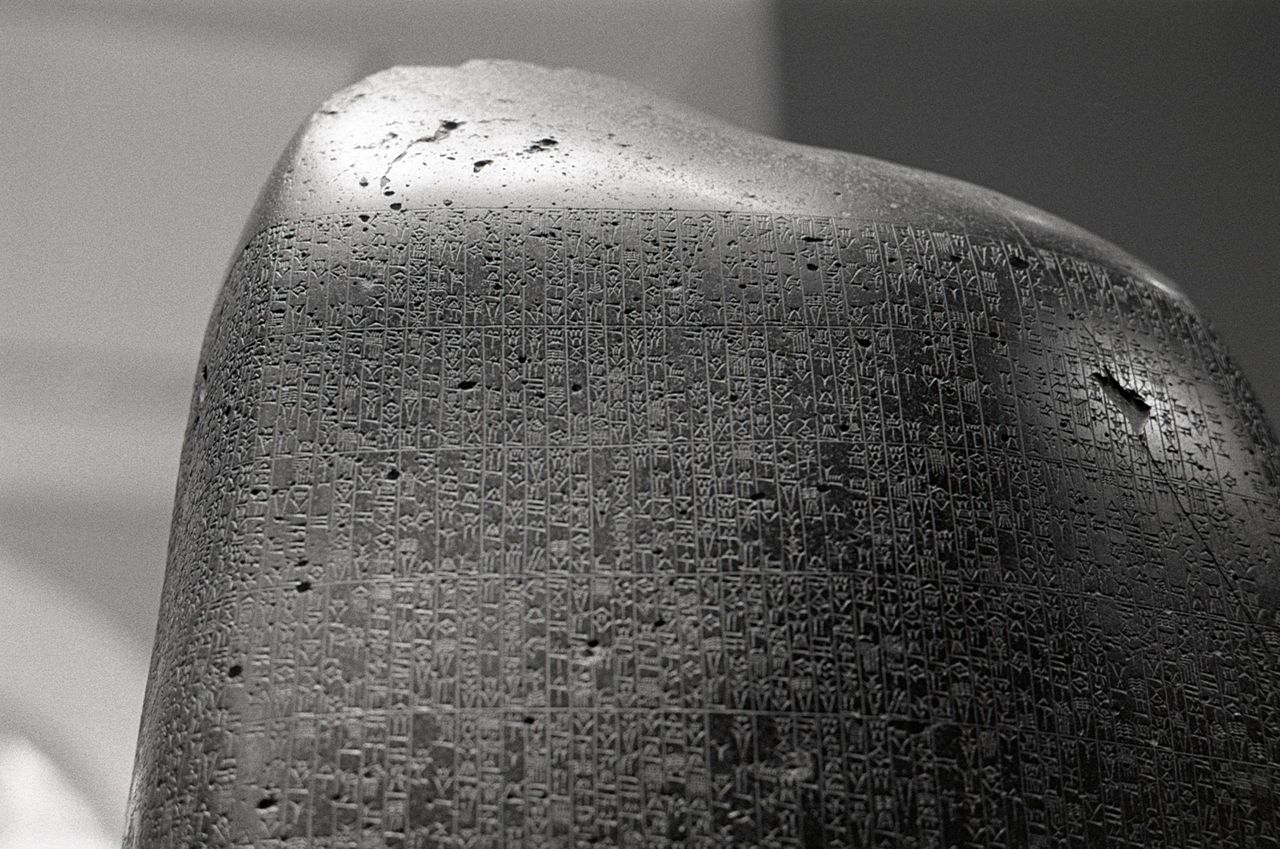 Colin Barey, CC BY 2.0, Wikimedia Commons
Colin Barey, CC BY 2.0, Wikimedia Commons
Building Codes
You may never have guessed that construction companies guaranteeing their work came from Hammurabi's Code. And while "building codes" were most certainly not a thing in Ancient Mesopotamia, the Code of Hammurabi did stipulate: "If a builder constructs a house for a man but does not make it conform to specifications so that a wall then buckles, that builder shall make that wall sound using his silver".
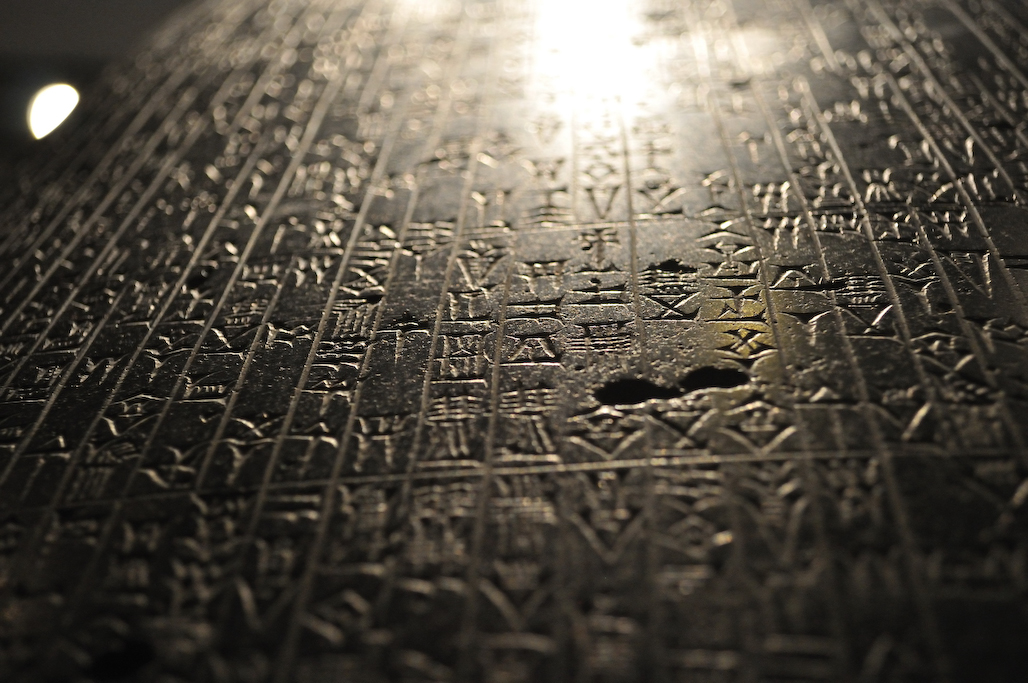 Haider Adnan, CC BY-SA 2.0, Wikimedia Commons
Haider Adnan, CC BY-SA 2.0, Wikimedia Commons
Persons Not Equal Before The Law
While certain writings in the Code of Hammurabi might make you think people were equal before the law, they were certainly not. Different degrees of punishment were handed out depending on the social status of the accused and victim. The three classes of people—gentleman, commoner, and slave—all had different punishments prescribed to them if they were victims of a crime.
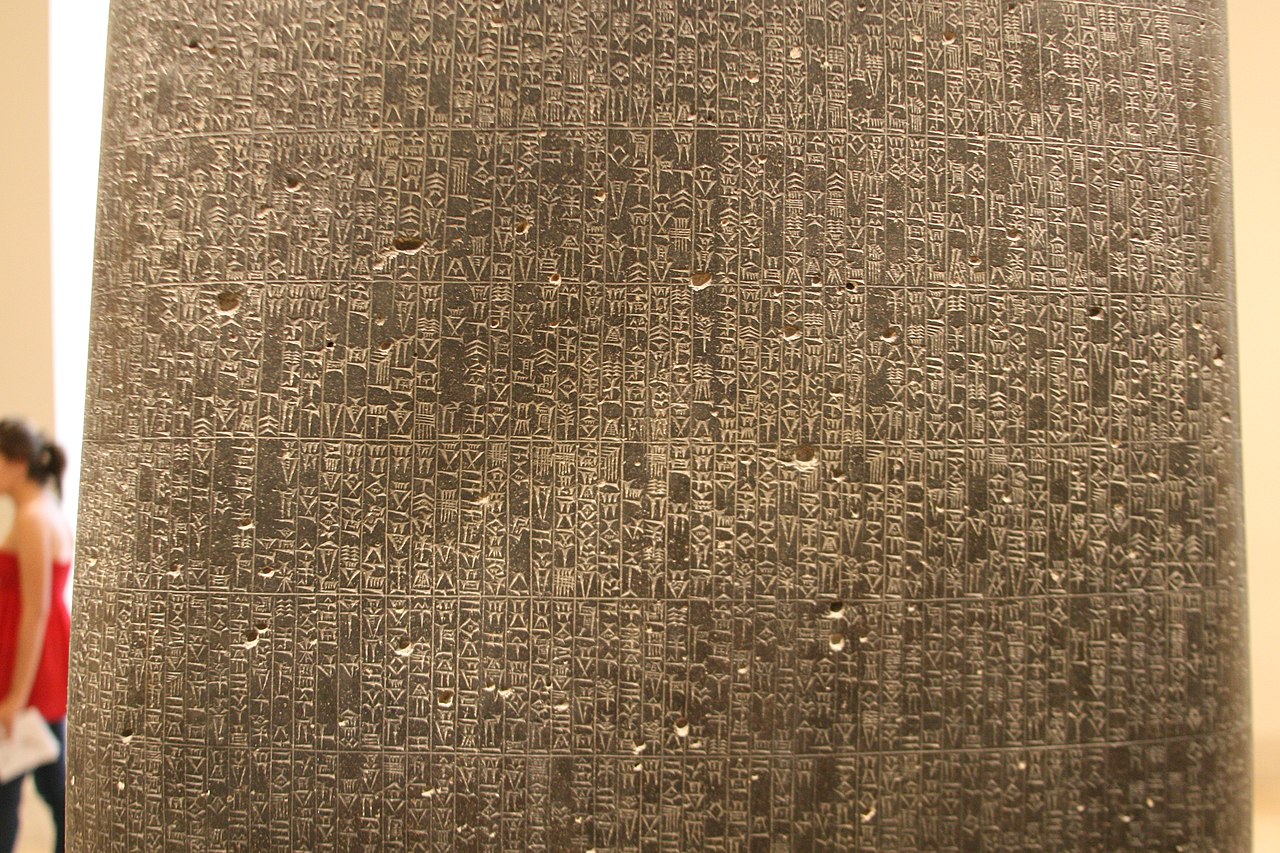 Tom & Cyndi Kuder, CC BY-SA 2.0, Wikimedia Commons
Tom & Cyndi Kuder, CC BY-SA 2.0, Wikimedia Commons
One Crime? One Punishment
While "double jeopardy" was far from common in ancient Mesopotamia, the Code specified that one punishment would be given for one crime. The punishments for crimes were often severe, involving the loss of limbs or life.
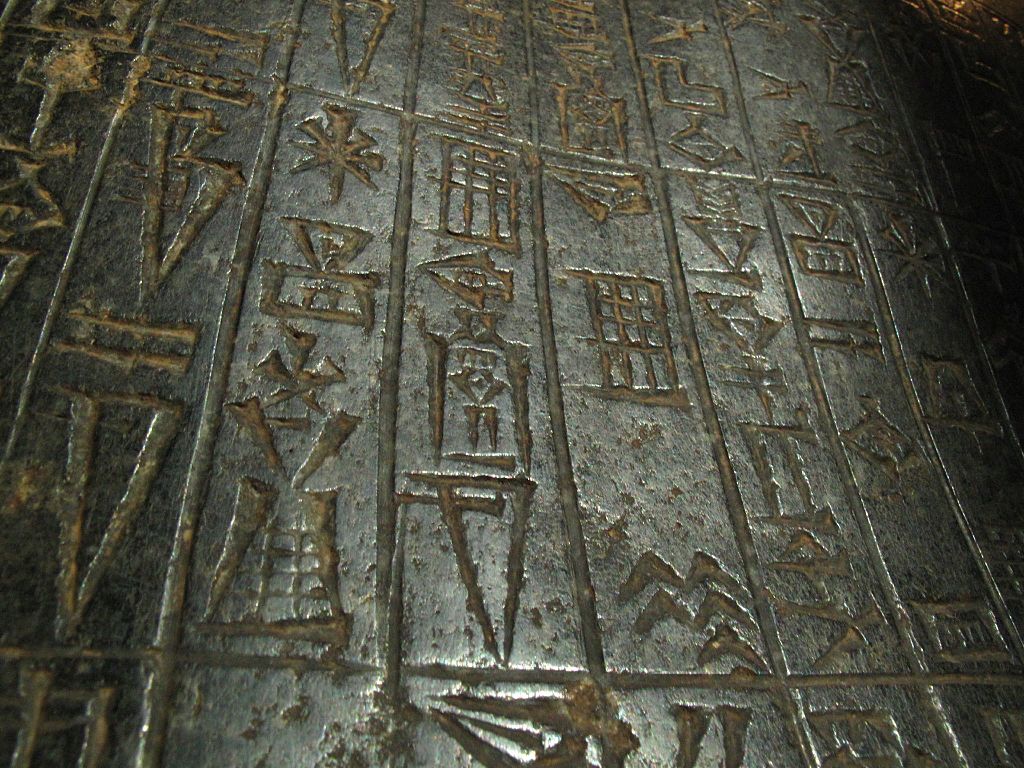 Ackteon, CC BY-SA 2.0, Wikimedia Commons
Ackteon, CC BY-SA 2.0, Wikimedia Commons
The Presumption Of Innocence
Another standout legal principle from Hammurabi's Code was the presumption of innocence. The Code states: "If any one brings an accusation of any crime before the elders, and does not prove what he has charged, he shall, if it be a capital offense charged, be put to death". In other words, you'd better ensure you had a good case.
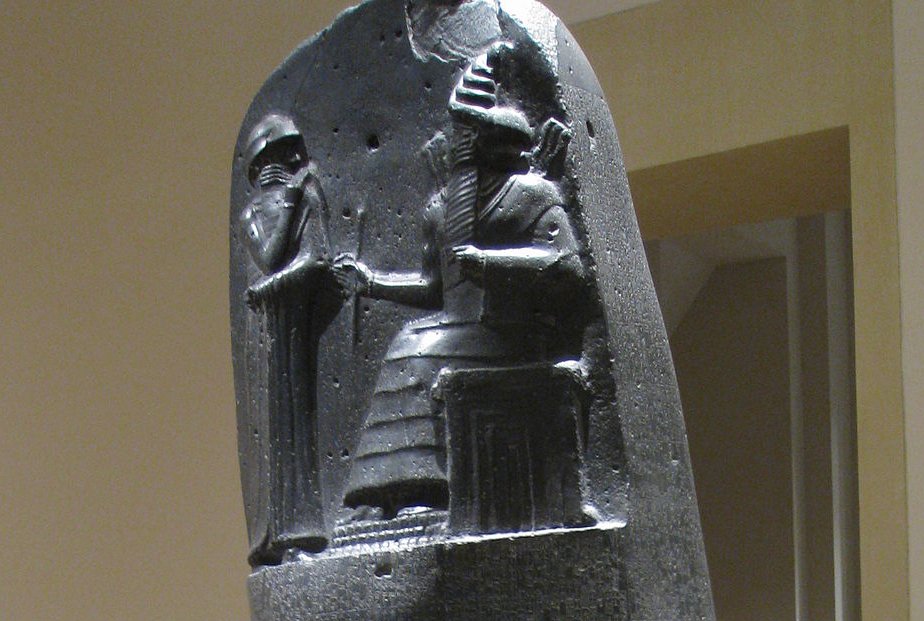 Hammurabi, Attribution, Wikimedia Commons
Hammurabi, Attribution, Wikimedia Commons
Providing Evidence To Prove Guilt Or Innocence
Another of the earliest incarnations of "innocent until proven guilty" was that evidence of a crime had to be brought before a judge, or "Galzu", as they were known, and one had to be convicted in court. You could no longer randomly accuse your neighbor of stealing your ox; you had to have evidence, like eyewitness testimony.
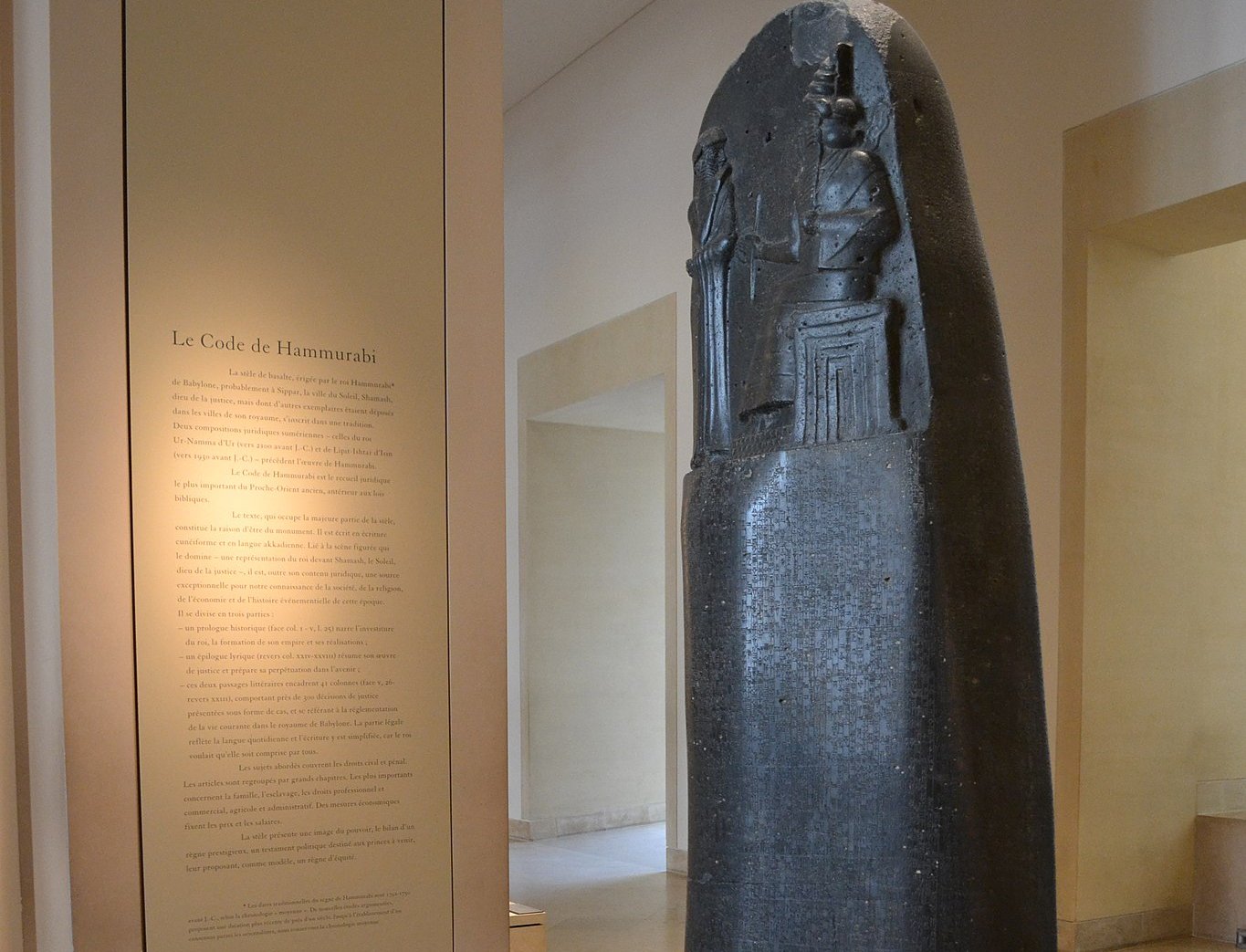 Hammurabi, CC BY-SA 2.0, Wikimedia Commons
Hammurabi, CC BY-SA 2.0, Wikimedia Commons
Established A Minimum Wage For Workers
Interestingly, the ancient Mesopotamian legal code was one of the first legal documents to establish a sort of minimum wage. For example, "Field laborers and herdsmen were guaranteed eight gur of corn per year". Meanwhile, a doctor who healed a "freeborn man" of broken bone was to receive five shekels.
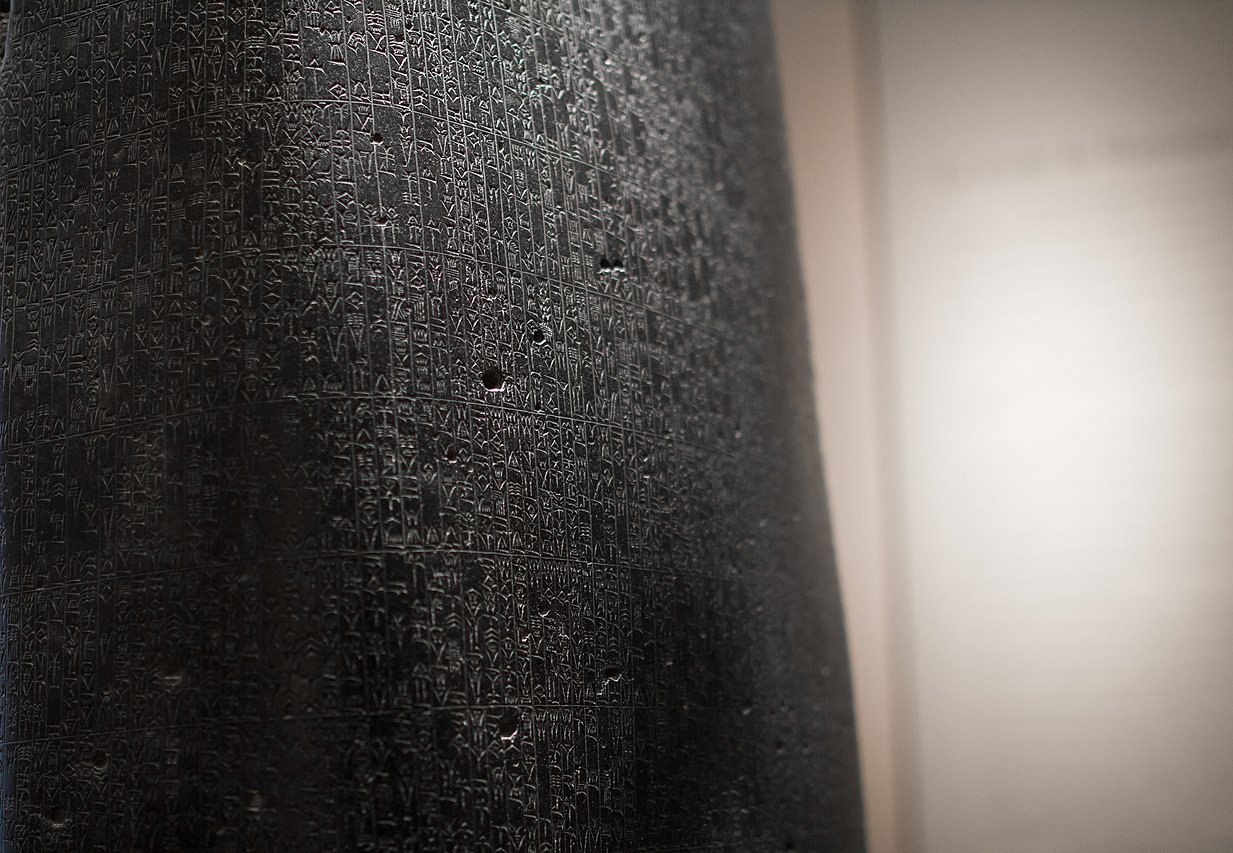 Hammurabi, CC BY-SA 2.0, Wikimedia Commons
Hammurabi, CC BY-SA 2.0, Wikimedia Commons
The Archaeological Rediscovery Of The Code
Despite being a mainstay in the legal world of the ancients, Hammurabi's Code was lost to the sands of time, only to be rediscovered in the 20th century by French archaeologist Jacques de Morgan. Working with a team of others, de Morgan unearthed the ancient stone slab in the Iranian city of Susa. Today, the Code of Hammurabi sits in the Louvre Museum in Paris, France.
 Abdullah frères, Wikimedia Commons
Abdullah frères, Wikimedia Commons
Other Ancient Texts That Make Up Modern Law
While the Code of Hammurabi may have been the first ancient text to codify modern legal principles in a singular format, it wasn't the first legal text of Ancient Mesopotamia. That would be the Code of Ur-Nammu, the oldest legal code in the world.
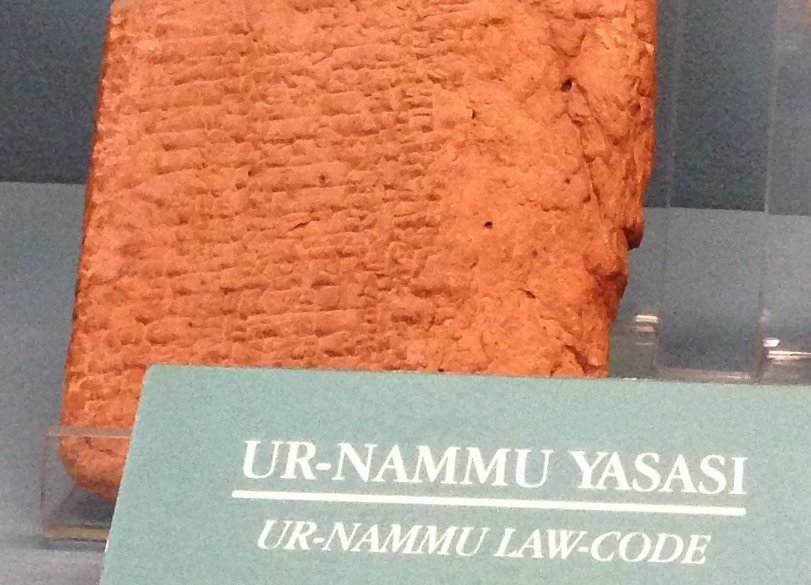 Istanbul Archaeology Museums, Wikimedia Commons
Istanbul Archaeology Museums, Wikimedia Commons
The Code Of Ur-Nammu
The Code of Ur-Nammu, written between 2100 and 2050 BC in the Sumerian language, is accredited to Ur-Nammu of Ur, who ruled Sumer between 2112 and 2095 BC. It was the very first code to issue "IF" (Crime) and "THEN" (Punishment), a form of moral reasoning known as casuistry, or cause and effect.
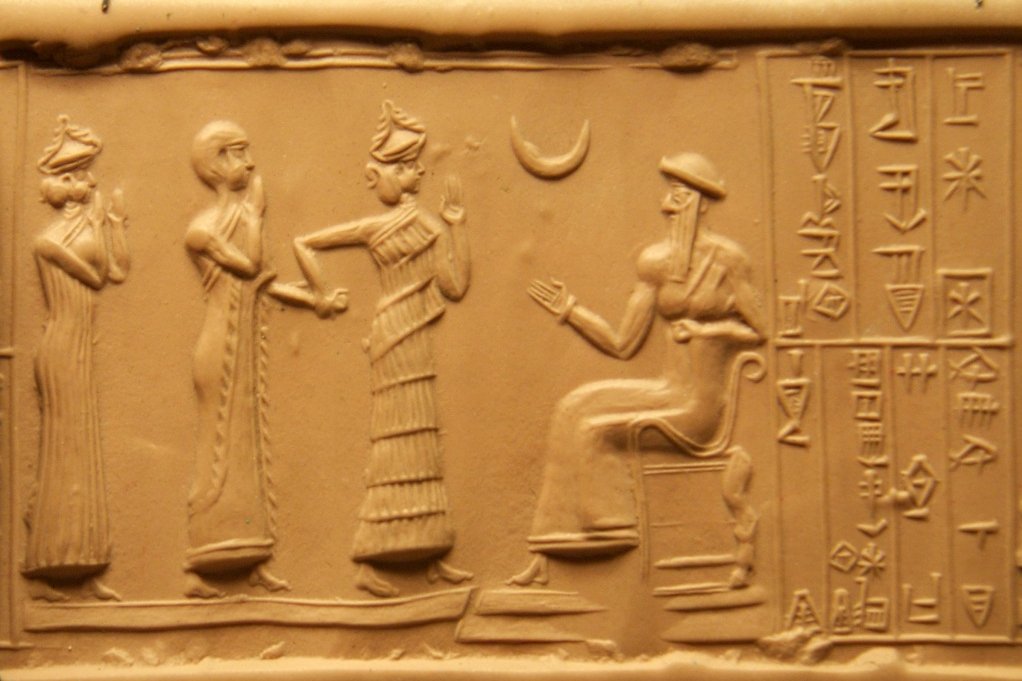 Steve Harris, CC BY-SA 2.0, Wikimedia Commons
Steve Harris, CC BY-SA 2.0, Wikimedia Commons
How Did Ur-Nammu's Code Differ From Hammurabi's Code?
While only a few passages remain of Ur-Nammu's code, compared to the vast Hammurabi Code, there were a few major differences between the two of the earliest legal codes known to us. For instance, in the Code of Ur-Nammu, bodily damage done to one person was to be punished with remuneration rather than the Hammurabian "eye for an eye" method of punishment.
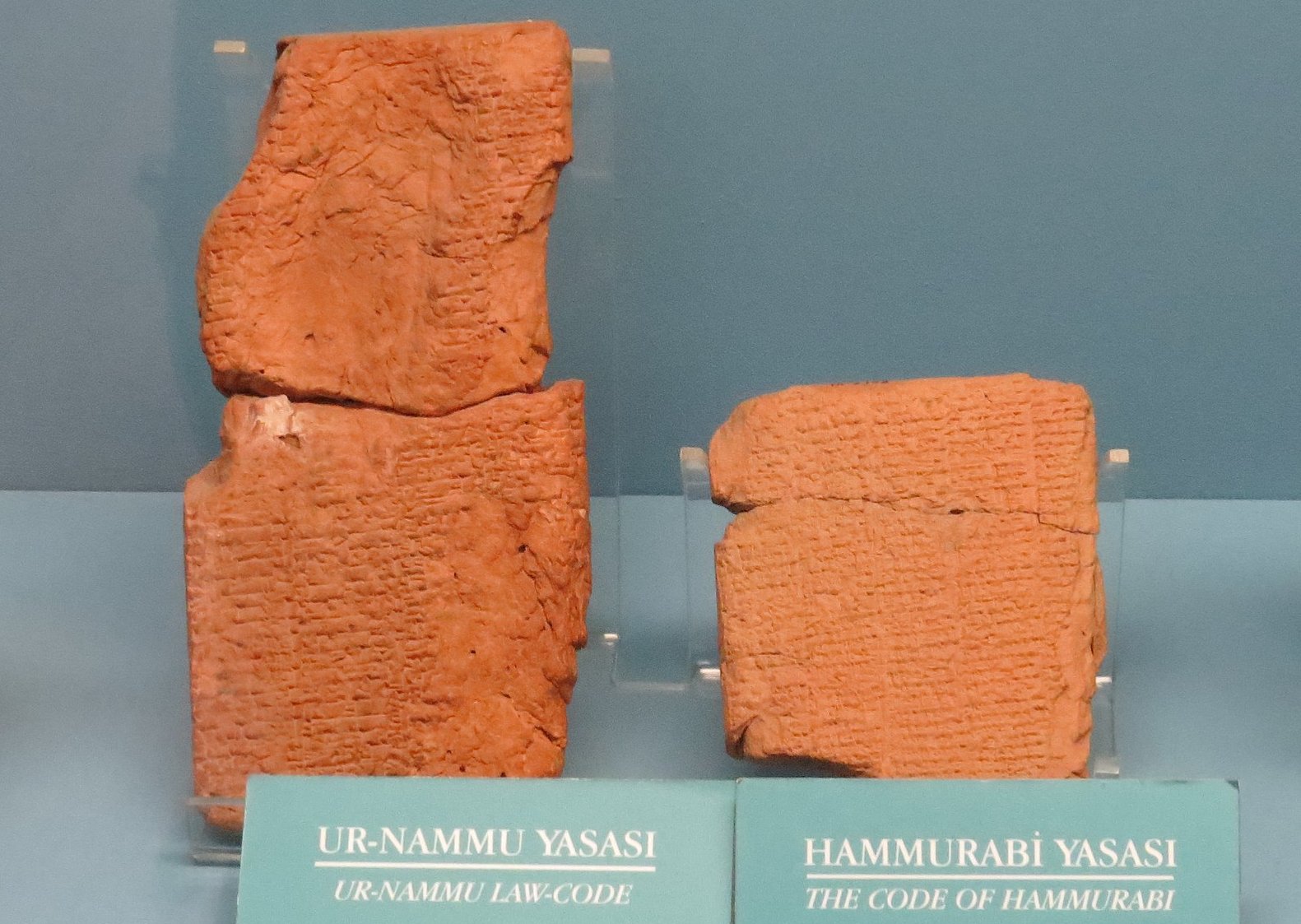 David Berkowitz, CC BY 2.0, Wikimedia Commons
David Berkowitz, CC BY 2.0, Wikimedia Commons
Surviving Laws From The Code Of Ur-Nammu
Despite being nearly three centuries older than Hammurabi's Code, some laws from Ur-Nammu's Code remain. Chiefly, the concept that murder is to be met with capital punishment remains—a practice that many American states still employ. 31 other laws from the Code of Ur-Nammu are currently on display in the Istanbul Archaeology Museum.
Roman Civil Law
Roman Civil Law laid the groundwork for much of the law that European and North American law is based upon. Known as ius civile, or "Civil Law," the Romans would begin to write down their laws in meetings around 451 BCE.
 Cesare Maccari, Wikimedia Commons
Cesare Maccari, Wikimedia Commons
The Twelve Tables
A committee of 10 men, known as the decemvirs, was established in 451 BCE, and their job was to write down Roman law for the first time. Taking two years to write down the laws of the Roman Empire, the work they produced in 449 BCE was known as the Twelve Tables.
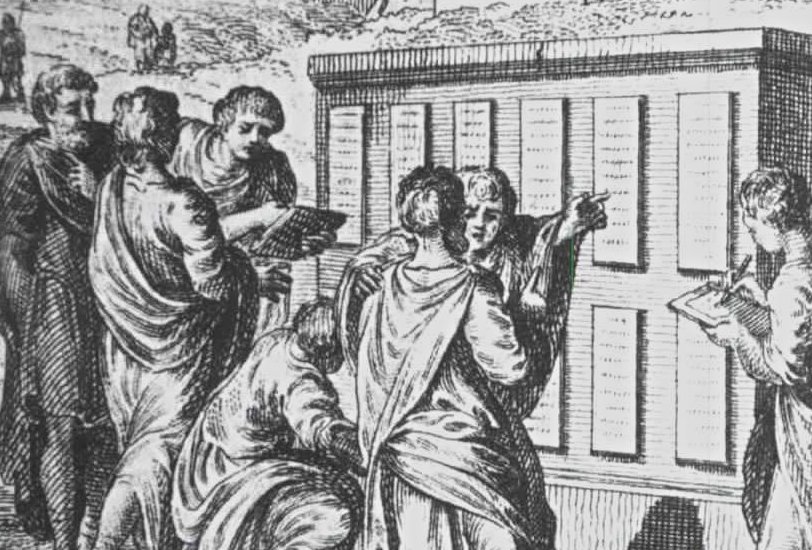 staff.4j.lane.edu, Wikimedia Commons
staff.4j.lane.edu, Wikimedia Commons
Laws Of Nations, People, And Nature
While other civilizations may have previously understood the laws of nations, people, and nature, the Romans codified this understanding into three areas: Jus civile (Civil Law), laws that applied to everyone in all parts of the Roman Empire; Jus Gentium (Laws of Nations), laws that applied to all non-Roman citizens; and finally, jus naturale (Natural law), a law category applicable to all living creatures, both animal and human.
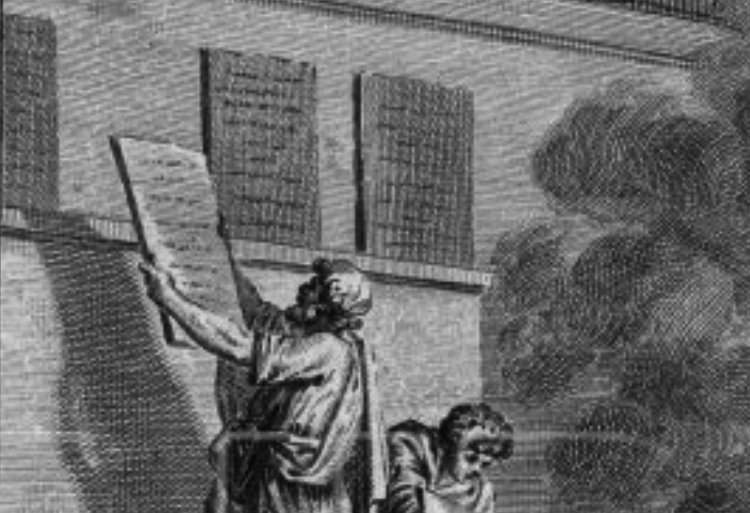 Silvestre David Mirys/Claude-Nicolas Malapeau, Wikimedia Commons
Silvestre David Mirys/Claude-Nicolas Malapeau, Wikimedia Commons
The Jurists Of Roman Law
Similar to the Supreme Court of the United States, Roman law elevated jurists to positions of supreme authority. Although no jurists in Rome could implement the law, their job was to interpret it. Under the Emperor Justinian, they compiled all of Roman law into one great body of work.
 Petar Milošević, CC BY-SA 4.0, Wikimedia Commons
Petar Milošević, CC BY-SA 4.0, Wikimedia Commons
Corpus Juris Civilis
This body of work became known as the Corpus Juris Civilis and was broken down into three parts: the Digest, the Code, and the Institutes. The Digest outlined the judiciary's legal opinions since the Twelve Tables was convened. The Code included the actual laws of the empire, including justifications. Finally, the Institutes were a summarized version of The Digest, intended to be a guidebook for law students.
 Metropolitan Museum of Art, Wikimedia Commons
Metropolitan Museum of Art, Wikimedia Commons
Justinian's Greatest Contribution To European Law
This compilation of Roman law is said to be one of the greatest contributions to history that Emperor Justinian ever made. Roman law proved to be the foundation of Western civil law. It also formed the basis for English common law, which was established (ironically) by a Frenchman in 1066, when William the Conqueror became King of England.
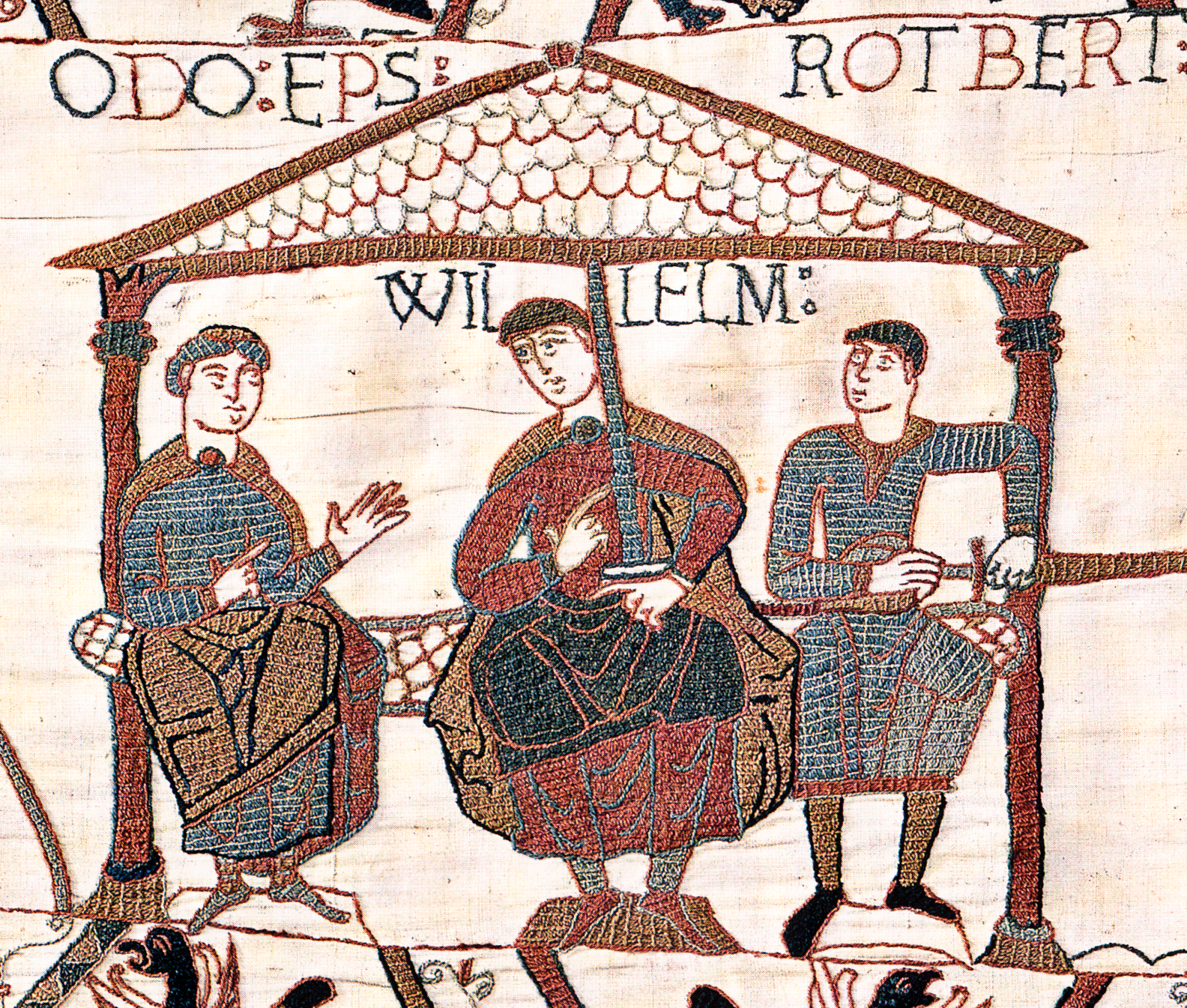 12th century, Wikimedia Commons
12th century, Wikimedia Commons
English Common Law
The establishment of "common law," more specifically English common law, has its roots with William the Conqueror, who became King of England in 1066 after defeating Harold Godwinson at the Battle of Hastings. Several common law principles brought over from France were derived from Roman law. They include...
Stare Decisis
Stare decisis, which means "to stand by things decided" in Latin, establishes the principle of legal precedents. It provides the basis for English common law, where judges decide based on precedent rather than legal constitutions. While legal constitutions may provide an informative basis for an opinion, judges tend to use overarching legal precedents rather than the prescribed punishment for a crime.
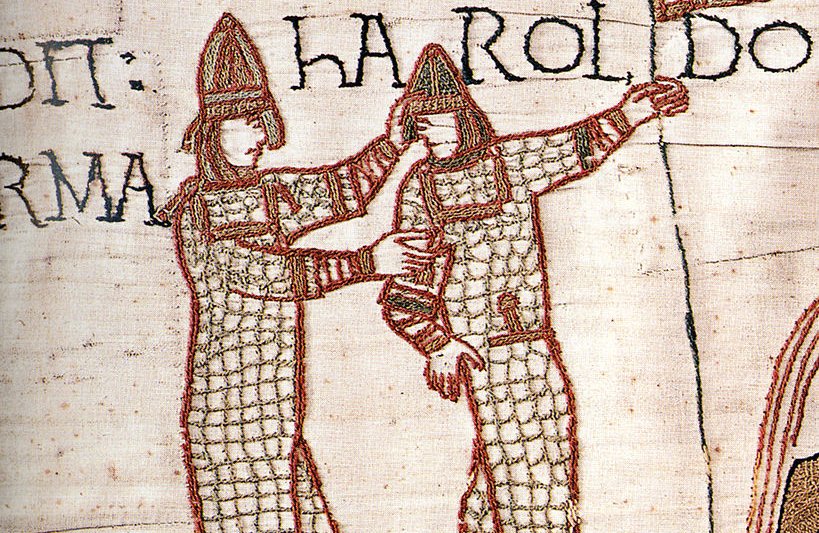 12th century, Wikimedia Commons
12th century, Wikimedia Commons
The Magna Carta
While not as ancient as the Code of Ur-Nammu or Hammurabi's Code, the Magna Carta, or "Great Charter," was one of world history's most significant legal documents. Established by King John in July 1215, it was the first legal document to establish both individual rights and the rule of law in England.
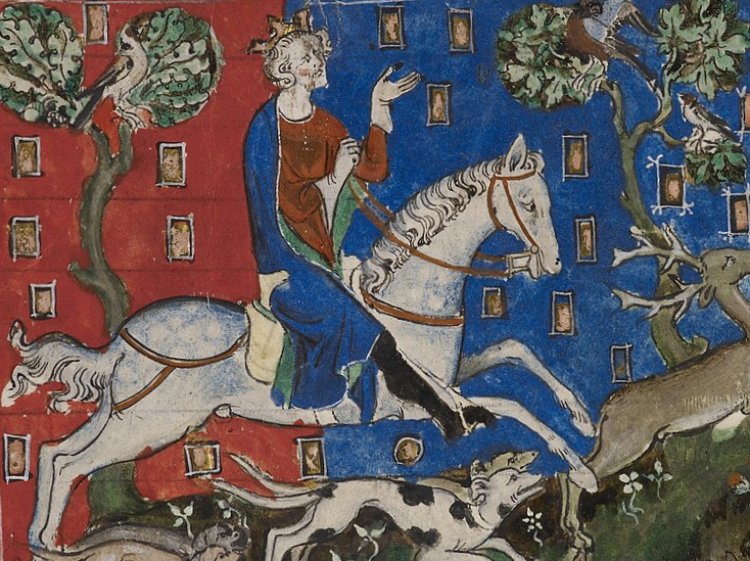 British Library, Wikimedia Commons
British Library, Wikimedia Commons
What The King Could & Could Not Do
Before the Magna Carta's creation, the King had extraordinary power. He could do as he liked, establish ownership over lands not originally belonging to the Crown, and order imprisonments, arrests, and much harsher punishments for those who defied him. Essentially, the King was the law.
 Matthew Paris, Wikimedia Commons
Matthew Paris, Wikimedia Commons
The Clauses Of The Magna Carta
While only four of the original 63 clauses in the Magna Carta are relevant today, many of the laws enshrined in it have been overwritten by British law since then.
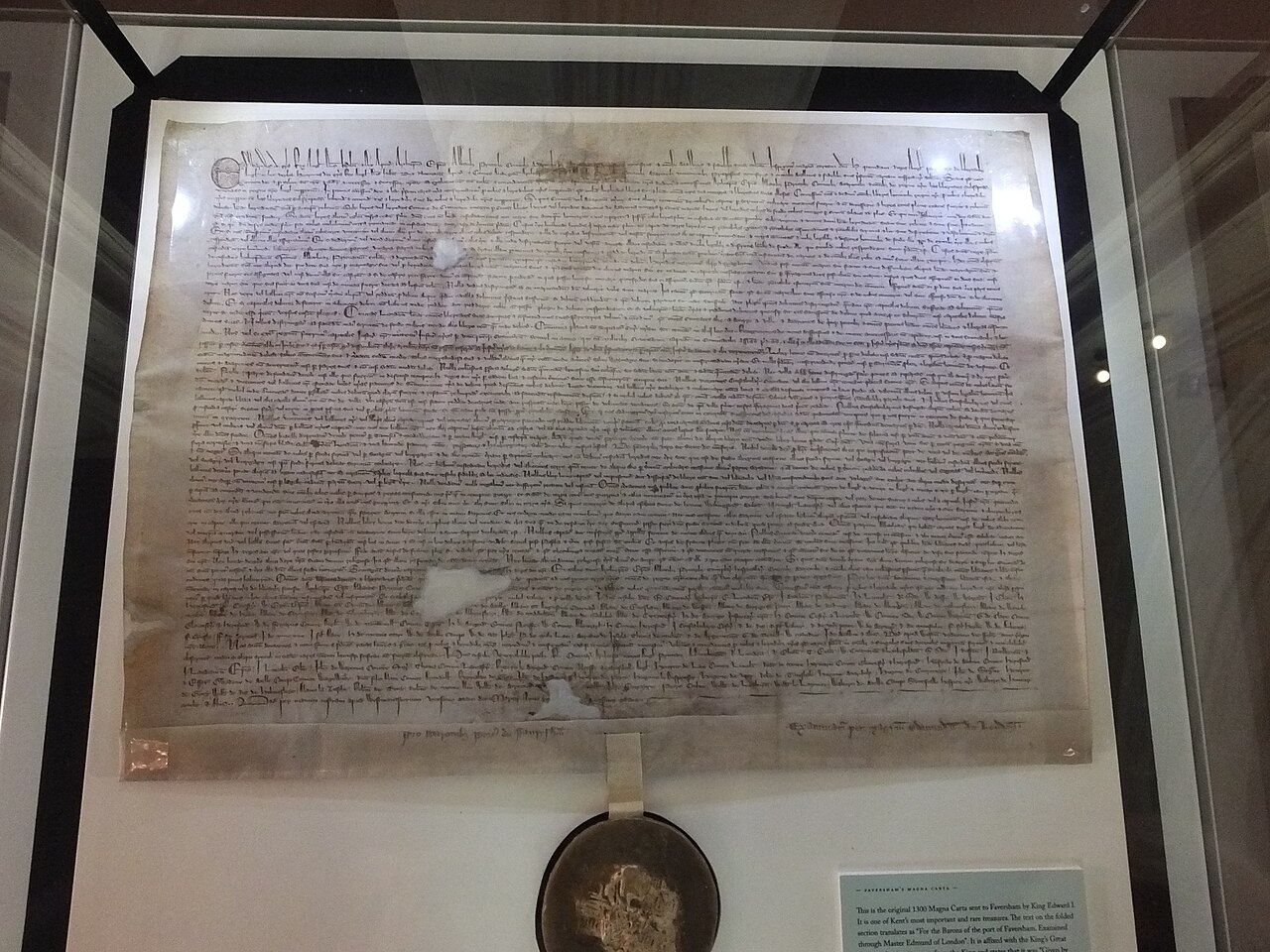 Clem Rutter, CC BY-SA 3.0, Wikimedia Commons
Clem Rutter, CC BY-SA 3.0, Wikimedia Commons
No Free Man...
Among the four clauses that remain in effect, chief among them reads: "No free man shall be seized, imprisoned, dispossessed, outlawed, exiled or ruined in any way, nor in any way proceeded against, except by the lawful judgment of his peers and the law of the land".
 David Hillas, CC BY-SA 2.0, Wikimedia Commons
David Hillas, CC BY-SA 2.0, Wikimedia Commons
No Denial Of Justice
Another foundational principle of the Magna Carta that remains written into British law today is: "To no one will we sell, to no one will we deny or delay right or justice". This principle is the precursor to the right to a fair and speedy trial under the Sixth Amendment to the Constitution of the United States.
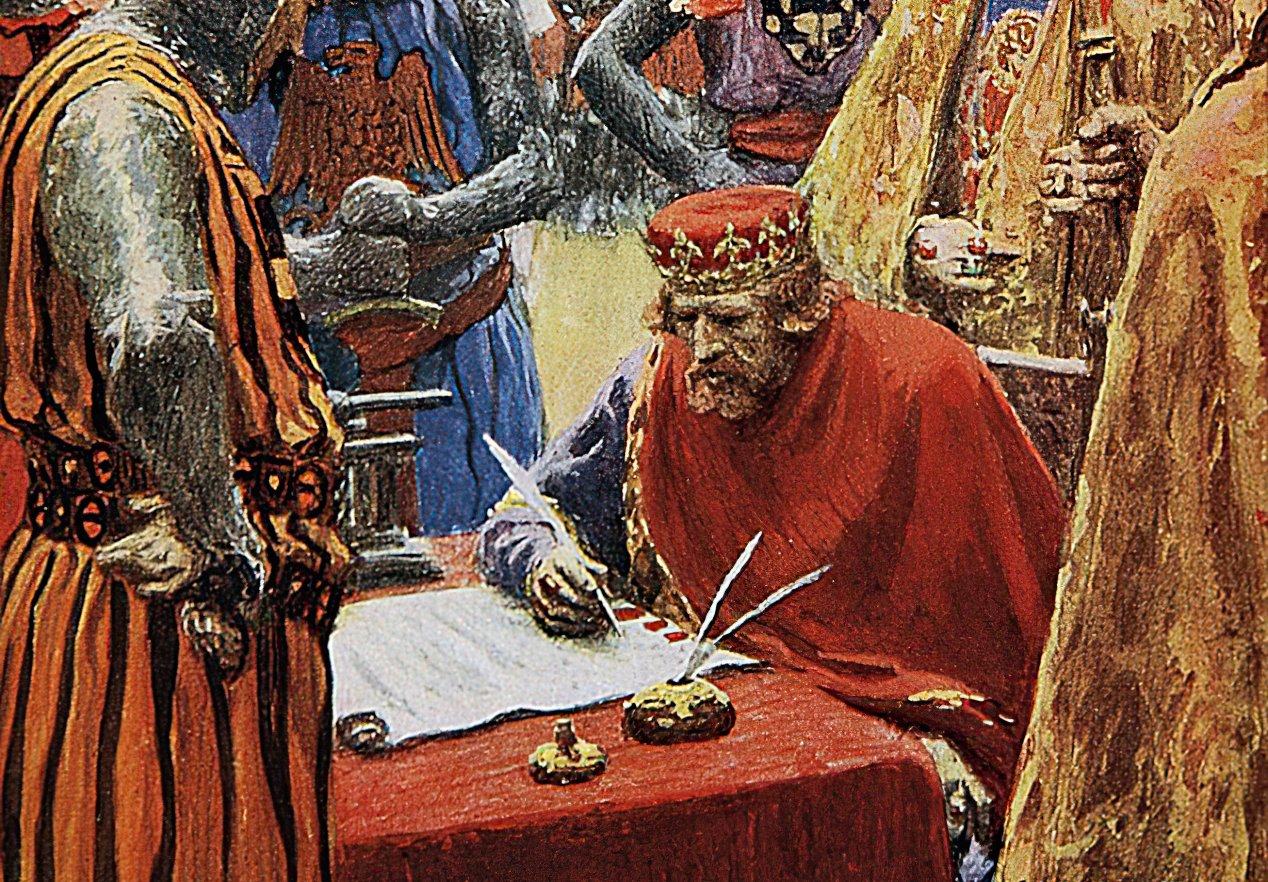 Arthur C. Michael, Wikimedia Commons
Arthur C. Michael, Wikimedia Commons
The Universality Of The Magna Carta
It's suspected that the language of the Magna Carta, particularly "to no one" and "no free man," gave rise to an understanding that these laws would apply to everyone, not just the pauper or the lower classes of British strata but up to (and including) the monarch. This universality allowed for the improvement of British law throughout the centuries and the exportation of such principles to the United States and many other countries.
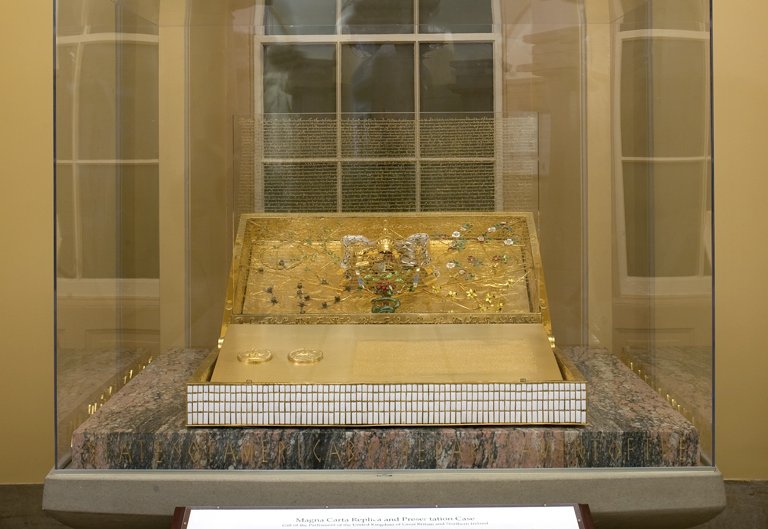 Architect of the Capitol, Wikimedia Commons
Architect of the Capitol, Wikimedia Commons
The US Constitution: From All That Came Before It
Adopting all of these principles throughout the centuries, the US Constitution is said to be one of the greatest living documents. Along with the Bill of Rights, it enshrined certain legal principles that had been carried over from centuries before into the foundation of the United States.
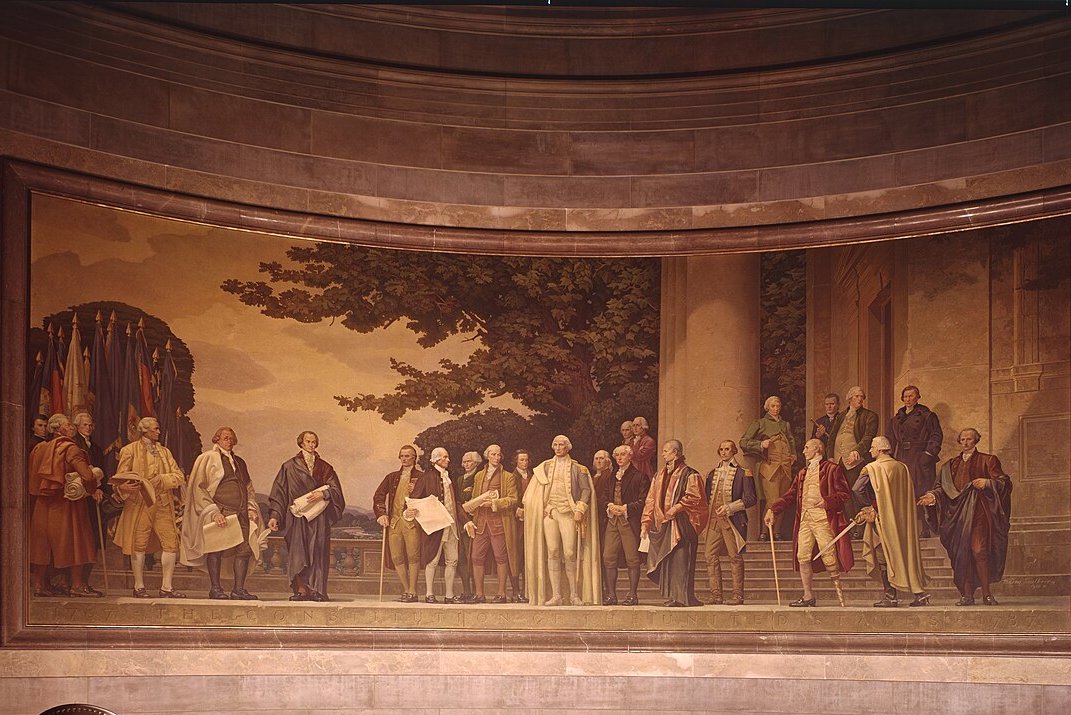 Education Division of the United States National Archives and Records Service, Wikimedia Commons
Education Division of the United States National Archives and Records Service, Wikimedia Commons
Constitutional Principles Adopted By Other Countries
The American Constitution contains many constitutional principles, such as the Separation of Powers, the Rule of Law, and a series of checks and balances on the powers of the government and head of state. Throughout the 19th century, many countries, such as Mexico, Denmark, Norway, the Philippines, and China, began to use the US Constitution to influence their establishment of democratic governance.
Without Ur-Nammu Or Hammurabi, Where Would We Be?
While Roman law and English common law are widely viewed as the basis of modern law, where would we be without the writings of Ur-Nammu or the Code of Hammurabi? Let us know in the comments below!
You May Also Like:
Epic Facts About Ancient Rome, History's Great Civilization
These Court Confessions Turned Cases Upside Down
Lawyers Share Their Criminally Good "Gotcha!" Moments
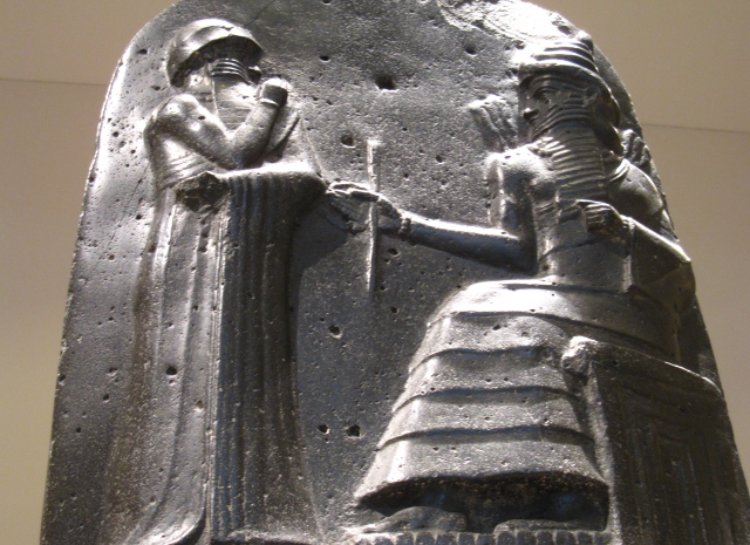 Hammurabi, CC BY 2.0, Wikimedia Commons
Hammurabi, CC BY 2.0, Wikimedia Commons
Sources:

